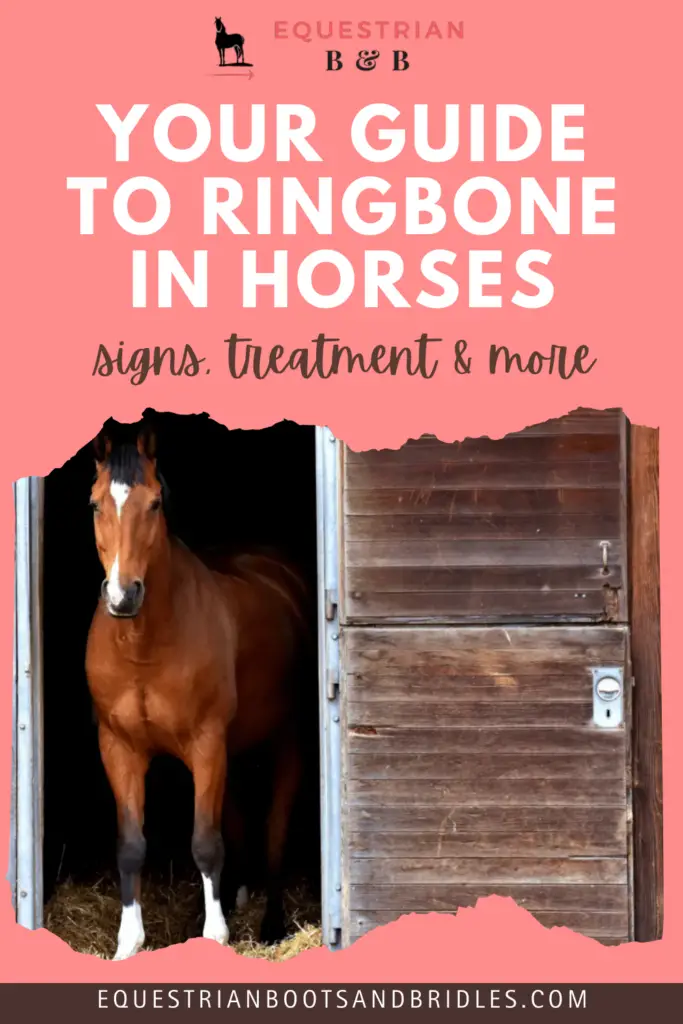If your horse suddenly starts going lame frequently with no outward signs, it could be the first sign of ringbone formation. To those in the racing and jumping fraternity, ringbone is a career-ending diagnosis.
But what is ringbone exactly? Does it mean a death sentence for your horse? Here you’ll learn about the signs to look for, how to treat it, and more.
Disclaimer: The contents of this article are educational in nature and aren’t meant to diagnose or treat ringbone in horses. Horse owners are encouraged to work in collaboration with their vet if they suspect their horse may have ringbone to decide on the best treatment and management plan for their horse’s unique diagnosis.
RELATED: The Essentials of Proper Hoof Care
What Is Ringbone in Horses?
When the bone inside the hoof wall or the pastern joint begins growing abnormally, a boney ring starts to form around the other bones, blocking the horse’s ability to flex their lower limb effectively. The horse’s gait is affected, and they suffer loss of movement that may create intense pain.
Ringbone may happen lower down, in the hoof wall, around the coffin joint, and this type of ringbone in horses is called “low ringbone.” Low ringbone is the more painful of the two types of ringbone that horses may develop. The increased pressure of additional bone growth inside the hoof capsule results in pressure that becomes painful and may create additional problems for the horse.
When the bone growth is above the coronary band, it’s called “high ringbone.” This kind of ringbone may be painful; however, there are still treatment options for this form of ringbone in horses.
Horses that are at most risk of developing ringbone are thoroughbreds that race or jump, and draft breeds that work on hard roads may also develop ringbone.
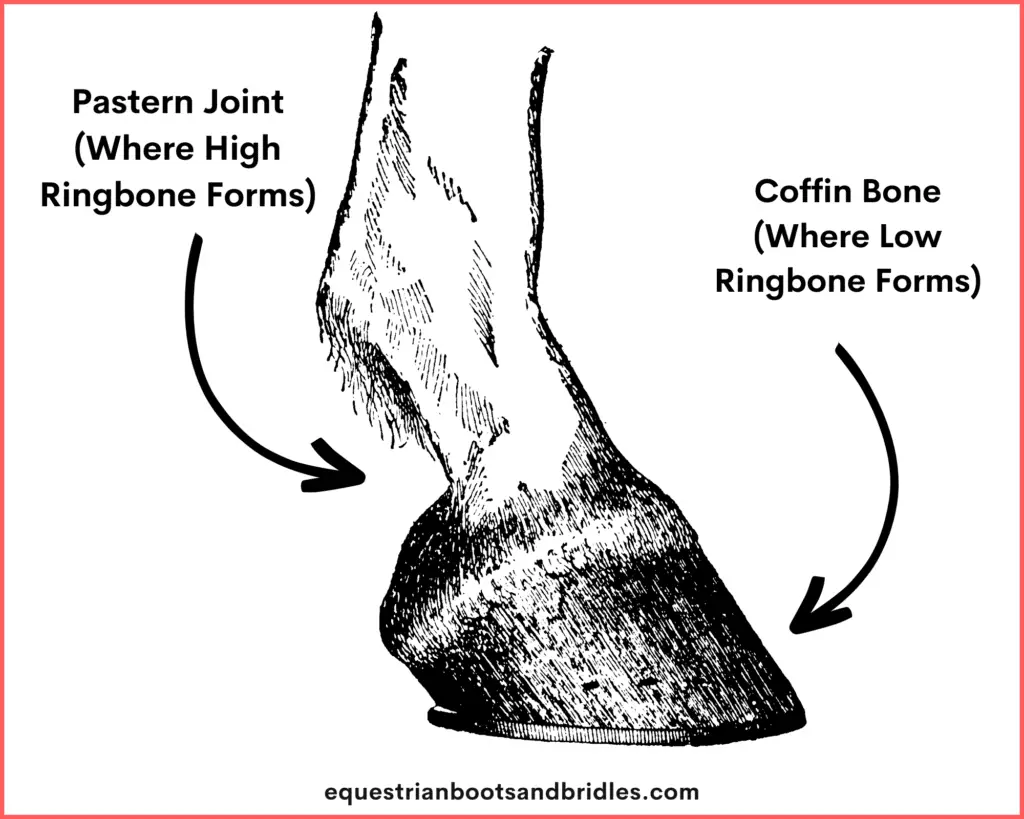
What Causes Ringbone in Horses?
Ringbone happens in response to increased strain on the lower limb joints and repeated concussive force. The pastern’s joint surface becomes agitated and the bone begins to thicken as a result of inflammation and continued pressure on the joints.
Over time, the joints thicken and create a bony cuff that can be felt when palpitating the pastern joint. The bone cuff may be all around the pastern bones, or it may be a partial growth that can be felt as a lump beneath the skin.
While bone isn’t a bad thing in itself, the location of the bony growth is a problem for the horse’s movement. It can rub on tendons, and the bony growth may not be smooth, which is when they are called bone spurs. These can lacerate the surrounding soft tissues.
So, to recap: ringbone develops in horses from repetitive stress on the joints when being worked hard or before the horse is ready for the strain of continued running and jumping.
Young horses are especially susceptible to ringbone formation when worked before their joints have fully developed. Older horses that have no history of ringbone may be more resilient and not develop ringbone later in life, since their joints have already fully formed and will be resistant to concussive forces that usually trigger ringbone formation.
Diagnosis of Equine Ringbone
Usually, a horse with ringbone will begin to show lameness, or the horse’s farrier may become concerned when feeling swollen joints. The next call will be to a specialist veterinarian to come and perform a lameness exam. An abaxial nerve block is injected into the joint capsule at different levels, determining exactly where the pain originates from. X-rays may also show a clear picture of the extent of the ringbone formation.
The formation of false ringbone in horses is when the bony protrusions are developed in areas outside the joint, but still affect the joint.
A loss of movement in the joint or “stiff joints” may also be a first indicator to owners, who will (hopefully) seek professional counsel for their horse’s health.
How Does Ringbone Affect a Horse’s Movement?
If the ringbone formation is located in a less flexible part of the pastern joint (such as the front), the effect it will have on the horse’s movement may be limited. When ringbone is solidified into a cuff that extends around the pastern limb, it may lead to pain, and the horse will be severely lame.
However, once the ringbone has fully calcified the pastern joint bones and caused the fusion of the joint, the cause of irritation (bones grinding on each other and ligaments) will stop being a problem, and the horse will be able to live a relatively pain-free life.
Ringbone formation will create a shortened step, prevent the horse bending their joints correctly, and trigger a painful hop-step. Further concussive force, such as from jumping and running, will exacerbate the problem and lead to further joint swelling.
Sadly, the prognosis isn’t as favorable for a ringbone formation that is partial and located laterally or behind the pastern bones, as it will create substantial friction and pain. Likewise, low ringbone may continue to cause severe pain in the hoof, and if there’s no improvement to treatment therapies, the horse may have to be euthanized.
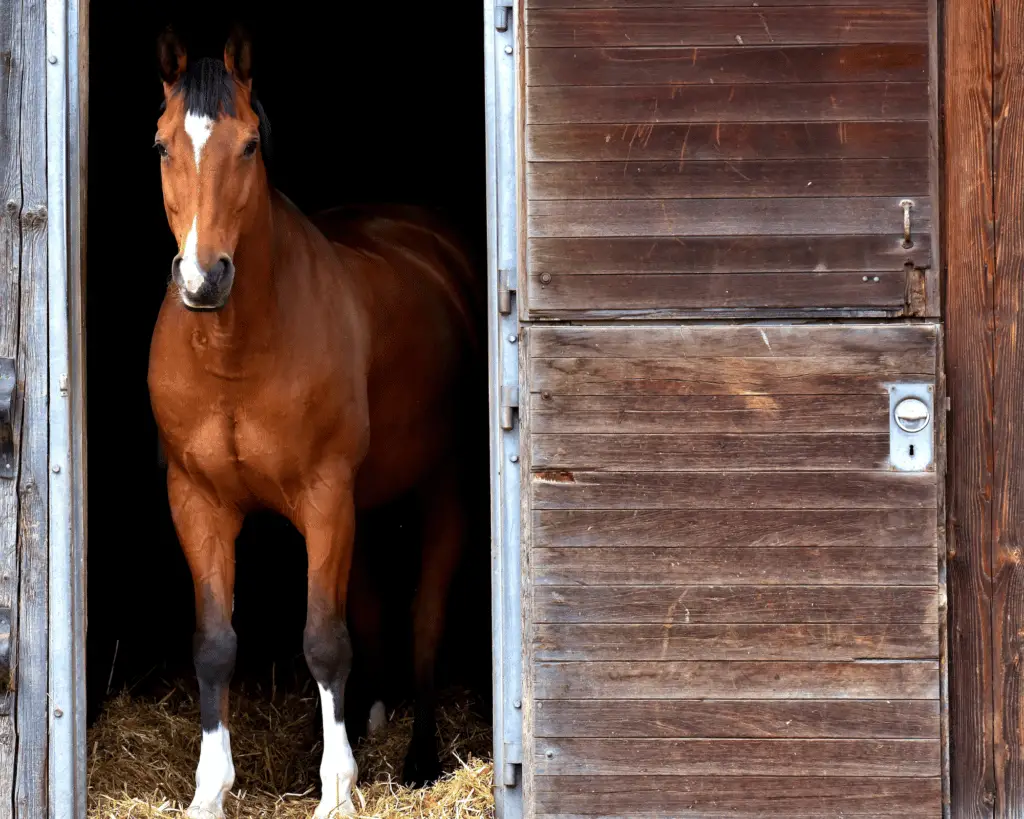
4 Treatment Protocols for Ringbone in Horses
When a horse has received a diagnosis of ringbone, it’s often difficult to make a decision what treatment or therapy is best to consider and whether the risk of serious pain for the horse is worth attempting to help them. Only the horse owner can make the final decision, and this should always be done in consultation with a qualified farrier and specialist veterinarian.
Your options for treating ringbone in horses include:
1. Cease Work and Begin Supplementation for Improved Joint Health
Reducing the amount of concussion on the pastern joint is important for treatment of ringbone. The horse should be kept in soft but firm bedding in their stable with limited turnout while treatment begins. Running should be discouraged until the horse starts responding to treatment.
If the ringbone diagnosis is of a recent formation, it’s possible to arrest the progression of the degenerative joint disease with treatment of the inflammation with anti-inflammatory drugs, and assist bone remodeling with supplementation. Including chondroitin sulfate in the horse’s diet may also assist in nourishing the joint.
Most horses may recover somewhat as the disease process fuses the pastern bones, thereby removing most of the pain and irritation. However, this is not a guarantee, and a poor fusion can trigger arthritic pain to worsen. So waiting it out with ringbone isn’t a long-term option.
2. Joint Injections
Using injections into the joint cartilage may relieve arthritic pain. Injections of hyaluronic acid, platelet-rich plasma, and stem cell therapy are a treatment modality gaining popularity for offering pain relief and limiting fusion of the joint.
3. Surgical Options
On the surgical front, there are two treatment options that you may choose to consider for high ringbone.
The first option, when ringbone has barely begun and is limited to a few small bone fragments or bony spurs on the pastern joint, is to remove the start of the bony proliferation. The chances of this being a long-term solution are not great, however. Bone spurs and growth tend to resume when the horse returns to work.
The second surgical option is the surgical fusion of the pastern joint with a locking plate system and screw combination that will help relieve pain and make the horse comfortable. When using a bone plating procedure, the horse’s pain is reduced or eliminated because the flexible pastern joint becomes inflexible and the ringbone can’t irritate the affected joint.
There are, of course, risks to either of these surgical options, with joint collapse being one of the concerns. In severe cases, the arthritic joints become brittle and may not take to the plate and screw system. A bone scan is usually performed to evaluate the chances of success.
There is very little that can be done for low ringbone as the high motion coffin joint requires a vast range of motion to enable the horse to walk, trot, or canter. Low ringbone is considered the more severe ringbone of the two types. Fusion of the joint inside the hoof capsule is not a viable option in most cases.
4. Assistive Farrier Work
Managing ringbone may require the help of a skilled farrier who can use an open heel shoe to alleviate some pressure on the hoof capsule and pastern joint. Using shoes, the farrier can assist the horse in decreasing the pressure and concussion when their foot loads to the next foot fall. Effectively, a good farrier can help a horse with ringbone walk “lighter.”
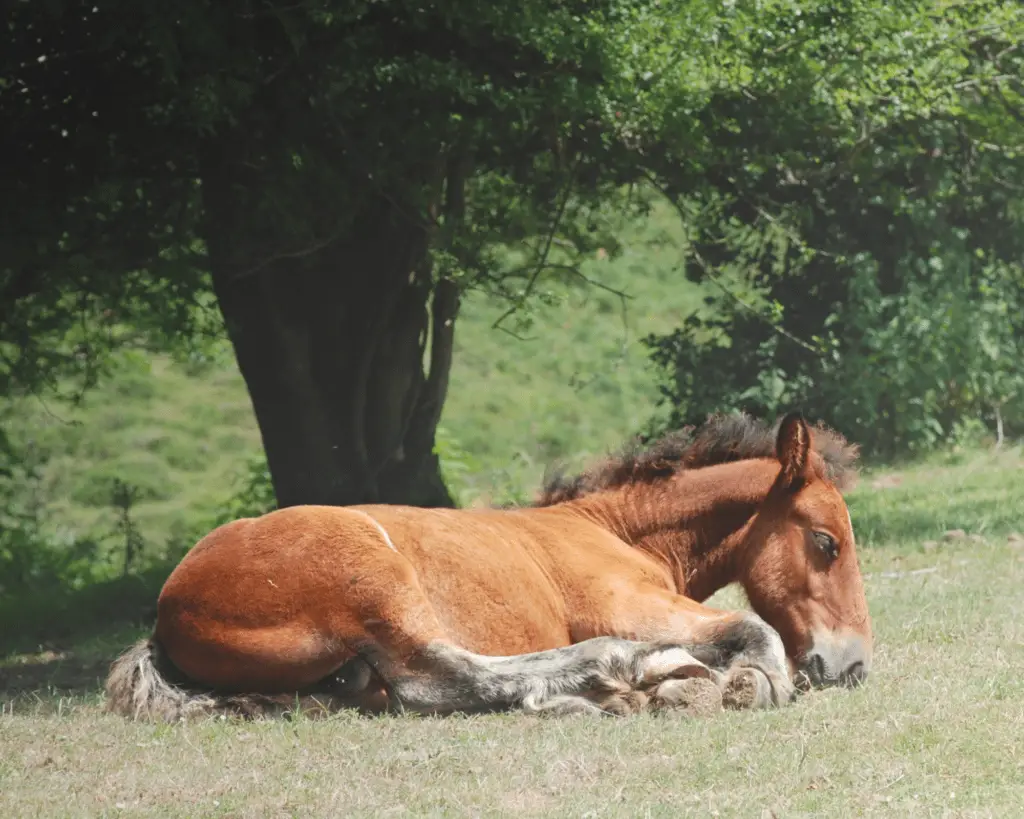
Preventive Measures to Limit Ringbone Development in Horses
Nobody sets out to force their horse to develop ringbone. There are some measures you can take to ensure your horse enjoys good joint health and preserve their joint’s higher range of motion for pain-free movement.
- Respect Joint Development
Horses are not born with hardened and fully developed joints. When backed too early and made to carry the weight of a rider before they are physically able to, it places increased strain on all of their joints. Ringbone may result from this additional pressure and stress on the soft joints of a young horse.
- Choose Your Terrain
Riding on hard ground is never a good idea for any part of the horse. The increased compressive force of running on hard or rocky ground will damage joints. If you do have to work on rocky ground, protect the horse with correct shoes that can help absorb some of the compressive force.
- Treat Pastern Injuries Immediately
Small nicks or punctures to the pastern joint can trigger inflammation, which will further aggravate the pastern joint, speeding up the formation of ringbone.
- Rest When Lame
If the horse is slightly lame, rest them immediately. Too often, riders say a horse is being naughty when they are refusing work or being difficult. However, these are frequently the pre-lameness signs a horse is giving their rider.
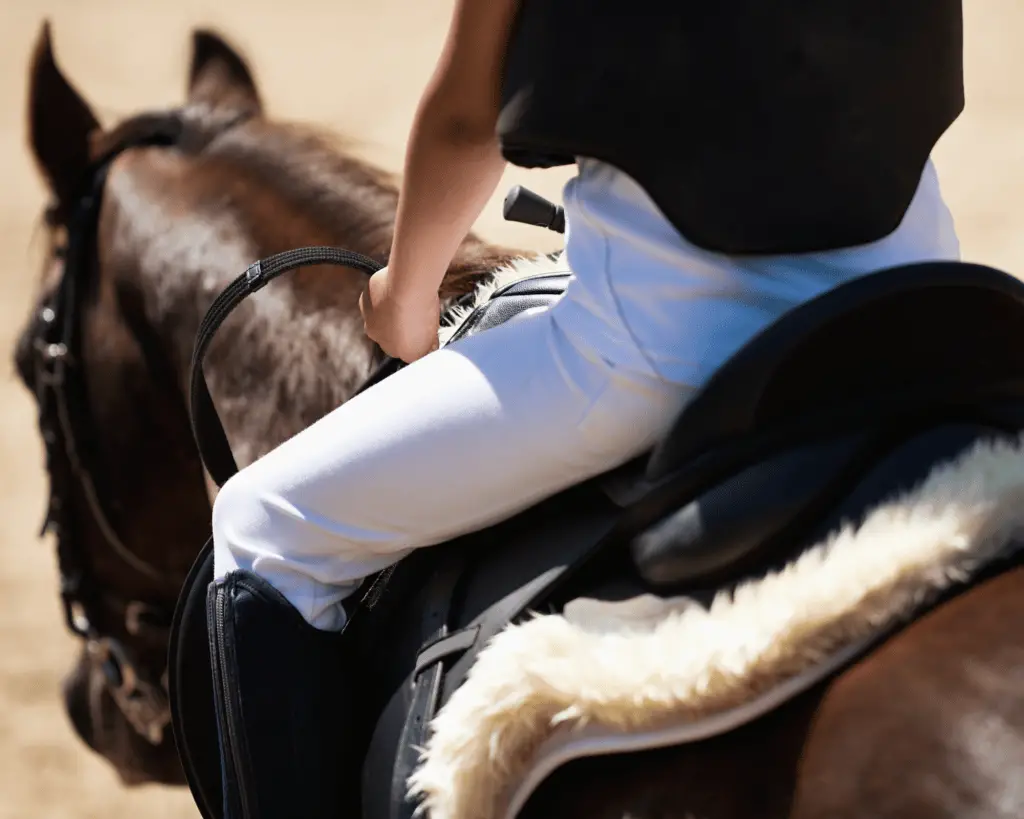
More FAQs About Ringbone in Horses
Can a horse with ringbone be ridden?
If the ringbone diagnosis is for high ringbone, the horse may be treated with a pastern fusion, which (once healed) can allow the horse to carry the weight of a rider without further pain.
How serious is ringbone in horses?
Ringbone is a degenerative disease, which means that the condition will worsen over time. If high ringbone is diagnosed, the horse’s pastern joint may fuse due to bony proliferation, which will provide relief of any arthritic pain. Low ringbone develops inside the hoof capsule, where there is little room for swelling or surgical intervention, and with high motion required from the coffin joint, the severity may lead to humane euthanasia as the only option.
Can horses get ringbone in hind legs?
A horse may develop ringbone in one limb, two limbs, or all four legs. Usually, ringbone is found on their front legs since the horse naturally carries more weight on their fore quarter.
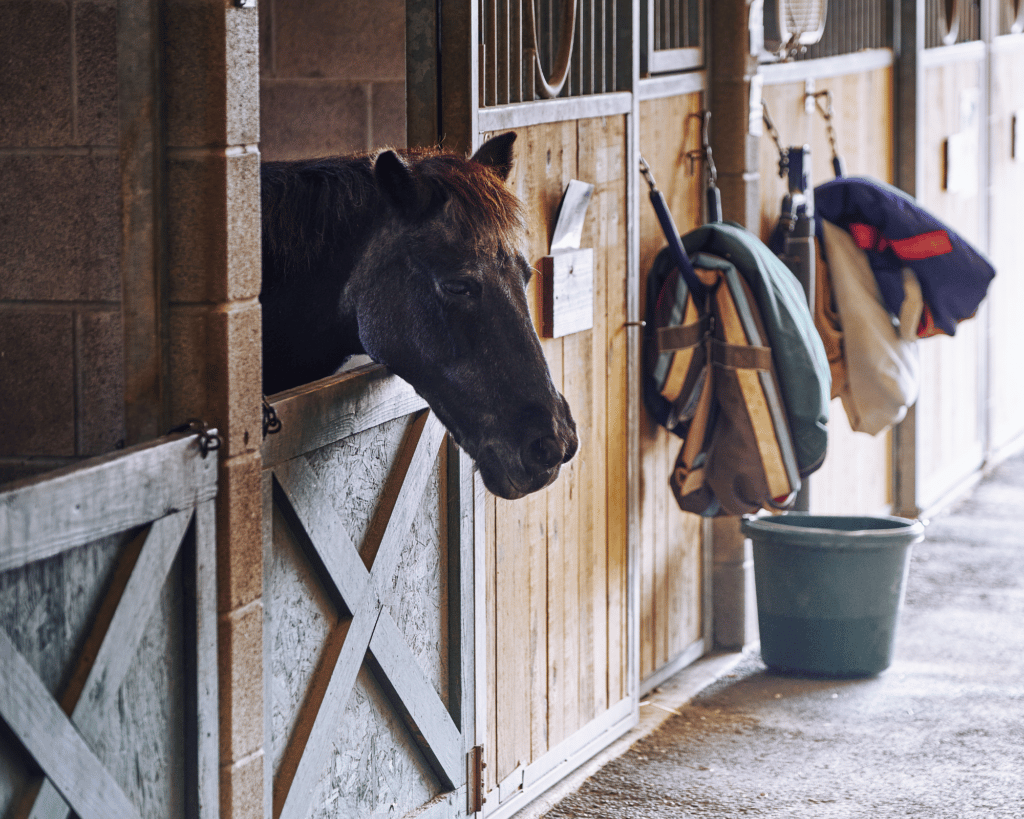
Ringbone is a serious condition. It affects performance horses, ending careers, and perhaps even leading to early death due to the degenerative nature of ringbone in the high motion coffin joint. Paying attention to the horse’s movement, their willingness to work, and their gait is imperative to help diagnose ringbone early.
Good horsemen and women know to rest a horse that’s showing signs of pre-lameness, and with a little rest, a horse may shake off the inflammation preceding ringbone formation and perhaps delay the early onset of this severe disease.
To learn more about joint health, please read my article on fetlock lameness in horses as ringbone and fetlock injuries often walk hand in hand.
Like this post? Save it on Pinterest. Follow me on Pinterest.
